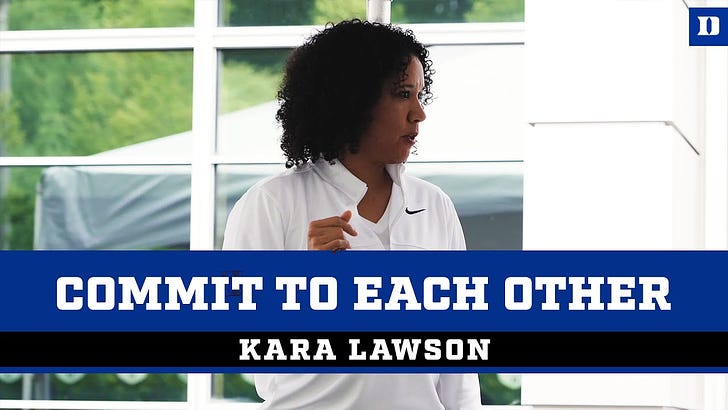One of the best ways you can learn how to improve your speaking and communication skills is to watch others — in your field or close to it — doing it really well.
In this ongoing series, I’m going to share videos of great coaches delivering great talks. For each, I’m going to tell you what they’re doing that makes them great.
(Side note: If you have examples of other coaches you’d like to share with me for this series, please email me directly at FitToSpeak@gmail.com)
Before we begin, I want to make one thing clear:
There are aspects of the way these coaches speak that could certainly be improved upon — from a technical standpoint. But I’m not going to mention those.
Why?
Two reasons:
Speaking is never perfect. And sometimes, what’s technically ineffective is exactly what makes you effective. Not everything needs to be ‘coached’ (but you already know that).
Because I’d rather you focus on what they’re doing great and mimic that.
The first coach in this series is…
Kara is the head women’s basketball coach at Duke University. She’s also a former WNBA player and an Olympic Champion.
Now, watch Kara’s talk on what it means to commit to each other:
Chills!
When I listen to this, I want to suit up and play for this woman. Damn.
So what is it that makes her great at speaking?
Her intensity
Her vocal variety
Her gestures
The logical structure of her message
She asks rhetorical questions throughout
1/ Her intensity
This is what I’d call an intangible. If I tried to describe her energy in words I’d be doing her a disservice. But I don’t need to describe it, because I know you can feel it.
How much she cares hits you in the face the moment you push play.
And because she delivers this message as if it will be the last thing she’ll ever say, you buy it. How could you not?!
Can you imagine how much your professional life would change if you spoke with this type of intensity? People would be lining up to work with you.
You’re right, it’s not necessary for all scenarios. But from my perspective, I’d rather talk with too much intensity too often, than scant intensity every once in a while.
Think about it…
When was the last time you said: “I don’t like working with that person, they care too much." (?)
2/ Her vocal variety
Up, then down… loud, then soft… fast, then slow.
Inflection, volume, pace, articulation, emphasis — whatever else you want to add to this list, she’s doing it.
And it works really well. Not just for Kara, but for most people who do this when they speak.
Vocal variety makes you interesting to listen to. It tells your listeners when you’re approaching, on, or coming off of an important point.
Vocal variety is the punctuation of speaking.
3/ Her gestures
In the ~3 minutes Kara speaks, not once do her arms come together in front of her body. In fact, they’re in one of two places:
Up (above her waist) and actively gesturing with open hands — helping us ‘see’ her words.
Down by her sides.
Gesturing above her waist draws her listeners’ attention closer to her face where the words are coming out — so everything is happening in one visual plane.
Her open hands signal confidence and trust.
Leaving her arms down by her sides when not actively gesturing is an indication of comfort and approachability. She’s leaving herself exposed to her listeners which makes her easy to feel connected to. There’s no physical barrier.
4/ The logical structure of her message
Kara tells her team what she’s going to tell them, then she tells them, then she tells them what she told them.
Her main message comes first: “Commit to each other.”
Her agenda comes next: “I’m going to tell you how you do it and why you do it.”
Point 1: “First thing is how you do it.”
Point 1 sub-point: “You spend time together.”
Point 2: “Second thing is why you do it.”
Point 2 sub-point: “You commit to one another so that when there is conflict, you’re able to move past it. That’s why you commit to someone else.”
5/ She asks rhetorical questions throughout
During her talk, Kara leads into each of her points with a rhetorical question:
Point 1 she says: “How do you commit to each other?”
Point 2 she says: “Why commit to somebody?”
Although subtle, it’s an easy technique you can use to create the perception of ‘conversation’ and signal to your listeners that you want them to reflect on their own answer to the question.
It’s also an indirect way to signal to your listeners that your message is following a logical question-and-answer format — which is how we tend to make sense of information.
This was fun and I’d love to hear what you think. Please share your thoughts and questions in the comments.
Who should the next coach be?
Thanks for reading!




I get the chills listening to Kara!!! Great article, I also love how you note that Kara is Kara, her way of speaking is her way of doing it. If we tried to be exactly like Kara it wouldn't be genuine, however taking notes of the changes of tone, body language, cadence, etc. is key to be a better speaker.